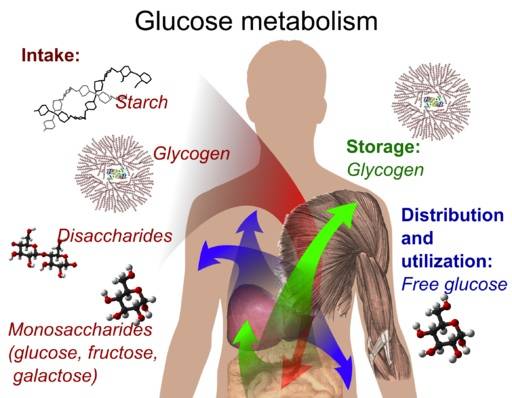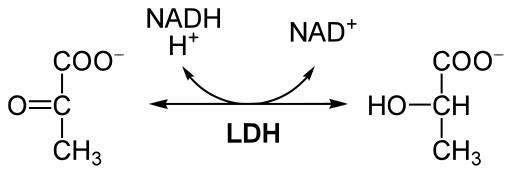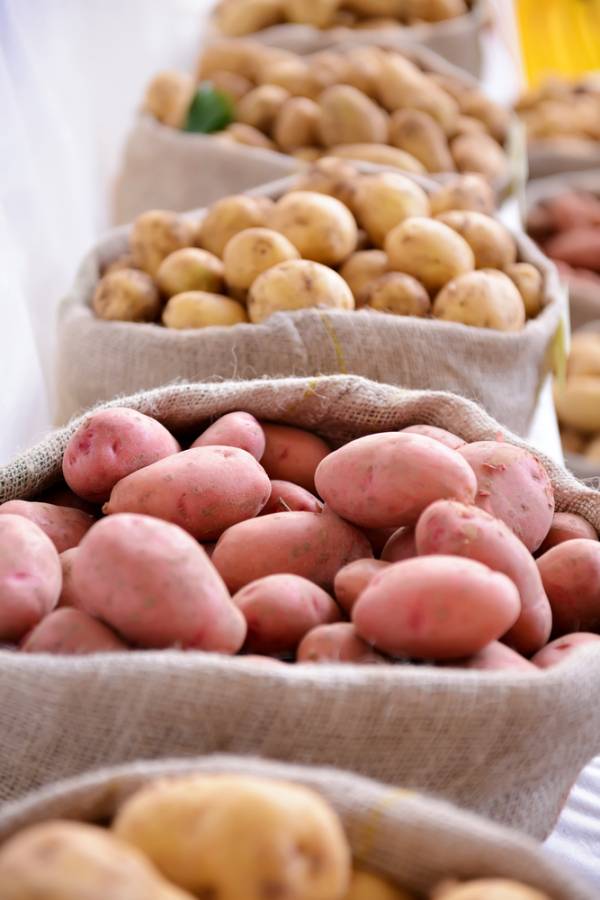In theprevious article Bioenergetics And Nutrition: Creatine, Carbs, And Protein, I explained the first of three energy systems, our ATP-PC system. In this article I would like to dive into glycolysis.
In theprevious article Bioenergetics And Nutrition: Creatine, Carbs, And Protein, I explained the first of three energy systems, our ATP-PC system. In this article I would like to dive into glycolysis.
Glycolysis takes over as the main energy system in activities that are slightly longer in duration and have a smaller energy demand than our ATP-PC system. Many of us train in this pathway and many sports require a high demand of the glycolytic pathway for fuel. Understanding the system and substrates involved can help increase you performance in these areas.
Glycolysis is the breakdown of carbohydrates. It lasts from roughly ten seconds into physical activity up to about two to three minutes. The energy for glycolysis comes from glucose, or our stored form of glucose – glycogen.
Glycogen is stored in muscle tissue and the liver, and the average person holds about 1,500-2,000 calories of stored glycogen. Broken down there are about 100g of glycogen in the liver and upwards of 400g of stored glycogen in muscle tissue.
Glycogen in the Liver and Muscles
Storing glycogen in the liver and muscles serves an important function in human metabolism. Our liver is the organ responsible for controlling blood sugar between meals.
When insulin levels fall, the opposing hormone, glucagon, is released. Glucagon stimulates the liver to release some of its stored glycogen into the blood to maintain blood sugar levels.

Glycogen stored in the muscle tissue serves an important role as well. Our muscles main function is to move bones. This allows us to do all the locomotive tasks associated with daily living.
What better place to store energy then within the tissues that require this energy to move us around? After the first seven to ten seconds of moving we utilize this glycolytic pathway for energy.
The first ten seconds of activity utilizes the ATP readily available in the cytosol of our cells. After that timeframe our body needs to resynthesize ATP from glucose and our stored glycogen.
This process requires quite a few chemical reactions. Due to the increase in reactions, this energy system takes longer to kick in then the ATP-PC system, but it will be able to supply a higher amount of total energy.
Fast Glycolysis and Slow Glycolysis
Glycolysis can be broken up into two different parts – fast glycolysis and slow glycolysis. The determining factor is the direction in which the end product, pyruvate, goes. Within fast glycolysis the pyruvate is converted into lactate. With lactate our body can resynthesize ATP at a much faster rate. This would occur when the activity requires a higher energy demand.

Pyruvate on the left, lactate on the right.
In slow glycolysis the pyruvate is shuttled to our mitochondria and we enter the citric acid cycle, or the oxidative system.
In the oxidative system the resynthesis of ATP happens at a much slower rate, but we can maximize the number of ATPs produced, yielding us with the highest amount of energy.
Lactate sometimes gets an undeserving bad wrap. Many people mistakenly associate an increase in lactate with an increase in lactic acid. However, lactic acid cannot exist when the body’s pH is around seven.
Instead, exercise decreases the body’s pH and this is known as metabolic acidosis. In fact, lactate may actually be a buffer to this metabolic acidosis.1 Lactate is actually utilized as energy by type 1 muscle fibers and cardiac muscle fibers.
With that said the body’s lactate levels are relatively low at rest and increase with an increase in physical activity. Byproducts of these reactions may be responsible for metabolic acidosis.
A clearing of the lactate from the blood is therefore a return to homeostasis. This is one aspect we attempt to train during high intensity interval training.
With enough oxygen present in the mitochondria, the powerhouse of our cell, the pyruvate is converted is shuttled into the mitochondria with NADH, a byproduct of glycolysis, and then converted into acetyl CoA. This is the start of the oxidative metabolism, which we will cover, in my next article.
Glycolysis and Proper Nutrition
Glycolysis is an anaerobic metabolic pathway. The only macronutrient that can be synthesized into usable ATP under anaerobic conditions is carbohydrates.
We need to make sure we take in enough carbohydrates to fuel glycolysis during activity. We also need to make sure we take in enough carbohydrates to keep our glycogen stores full. A reduction in muscle glycogen is associated with fatigue.2

This is where the importance of post-workout nutrition comes into play. Studies have shown an increase in glucose uptake by muscle tissue post workout.3
This makes carbohydrates an important piece of our post-workout recovery meal.
Simple starch may be the best source of carbohydrates post workout because of their ability to raise blood sugar levels quickly. This can allow for faster uptake by muscle cells to recover.
Fruit may even be a better option. Fructose gets immediately shoveled to our liver when ingested. Upon reaching the liver it is converted into glycogen to refill liver stores (it will not refill muscle stores because muscle cells do not contain a receptor for the GLUT5 transporter required to carry fructose).
Under conditions of decreased liver glycogen, such as exercise, fruit may have the ability to resupply the liver faster. Sweet potatoes, white potatoes, yams, and even white rice are good additions to the post-workout meal.
Other vitamins such as vitamin A, B2, niacin, and pantothenic acid are important for energy metabolism.
This puts a high emphasis on quality foods such as fruits and vegetables for high-level athletes. Foods such as these can be obtained throughout the day. In some cases supplementation may be necessary.
Some athletes require such a large amount of nutrients that it becomes difficult to obtain from food alone. In these cases, supplementation would be warranted. Make sure to work with a healthcare practitioner to determine if supplementation is right for you.
In conclusion, if you participate in sports or gym activities that require high energy outputs for two to three minutes, you need to make sure you are ingesting plenty of carbohydrates.
This is to ensure our muscle glycogen stores stay full to keep fatigue away as well as to supply our body with the necessary fuel to perform. The carbohydrates can be ingested from fruit, which may replenish liver glycogen stores more rapidly, or other safe starches such as potatoes.
In my next article we will look at the oxidative system and see how the energy requirements and substrates differ.
References:
1. Robergs, RA, et al., Biochemistry of exercise-induced metabolic acidosis. American Journal of Physiology (2004). Accessed on September 30, 2013.
2. Ortenblad, N et al., Muscle Glycogen Stores and Fatigue. Journal of Physiology (2013). Accessed on September 30, 2013.
3. Poehlman, Eric et al., Effects of resistance training and endurance training on insulin sensitivity in nonobese, young women: A controlled randomized trial. The Journal of Clinical Endocrinology and Metabolism (2000). Accessed on September 30, 2013.
4. Thomas Baechle and Roger Earle. Essentials of Strength Training and Conditioning. Human Kinetics (2008).
Energy pathways chart property of Pulse Beat Fit.
Glucose metabolism by Mikael Häggström [Public domain], via Wikimedia Commons.
Pyruvate/Lactate by Yikrazuul (Own work) [Public domain], via Wikimedia Commons.
Photos courtesy of Shutterstock.






